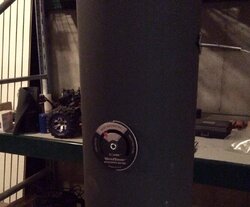mellow
Resident Stove Connoisseur
Mine is AT200CHIM, which looks just like the AT100. I think they packaged the probes and buzzer with AT100 and gave it a new p/n
On edit: i see the AT200 has external buzzer and low temp(reload) alarm the TL100 does not have.
AT200 has the different thermocouple connector and port for external buzzer, that is the only difference. I recommend the AT-100 due to the built in alarm is loud enough for most and it is cheaper.
Both have AL and AH settings.


